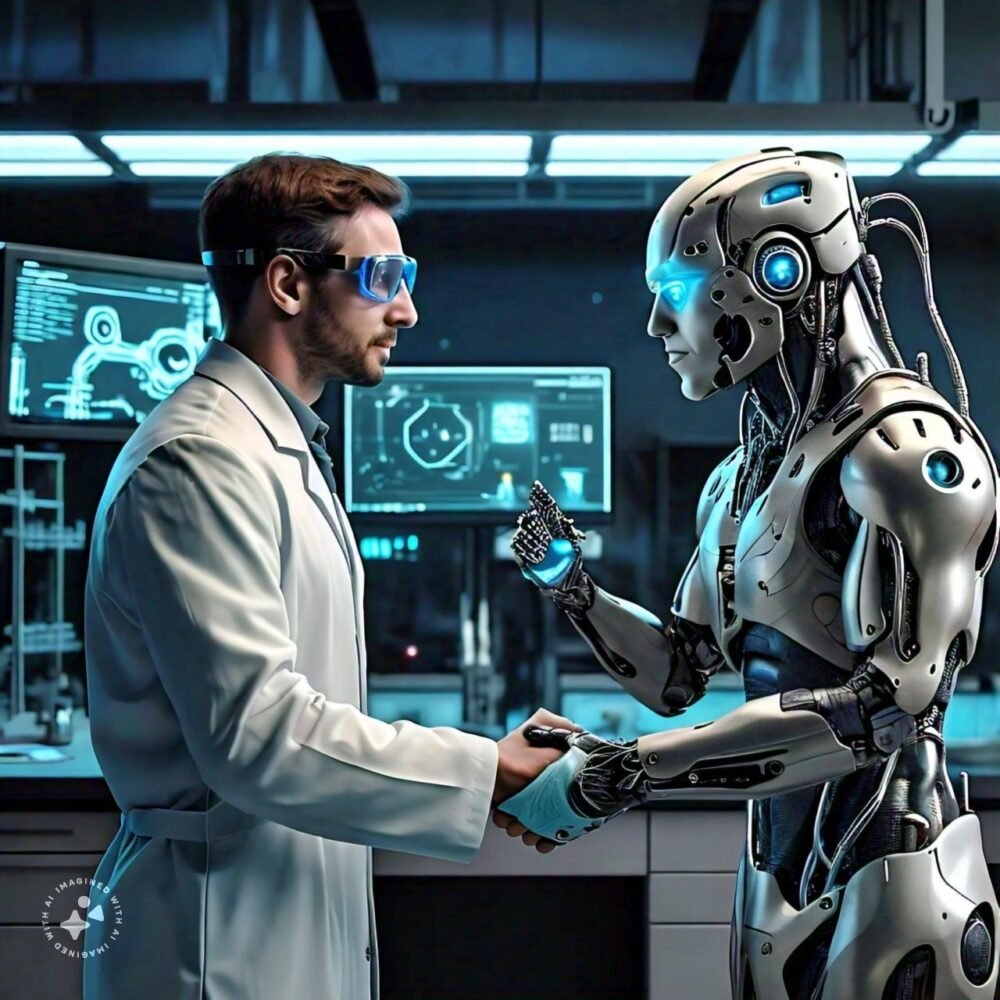Introduction
The rapid advancements in artificial intelligence (AI) over the past decade have transformed numerous industries, altering how tasks are performed and decisions are made. Among the most exciting and impactful developments is the collaboration between humans and AI systems. This collaboration, often referred to as human-AI collaboration, is not merely about automating routine tasks but about enhancing human productivity and creativity in unprecedented ways. By utilizing AI’s capabilities, individuals and organizations can unlock new levels of innovation, efficiency, and effectiveness. This article explores the various facets of human-AI collaboration, its benefits, challenges, and future prospects.

Key Takeaways
- Enhanced Decision-Making: AI assists humans in making better decisions by providing data-driven insights and predictions.
- Augmented Creativity: AI tools inspire and enhance human creativity across various fields, including art, music, and writing.
- Increased Efficiency: Collaboration with AI streamlines workflows, reduces mundane tasks, and frees up human resources for higher-level activities.
- Personalized Experiences: AI enables personalized interactions and experiences in customer service, education, and healthcare.
- Challenges and Considerations: Ethical concerns, biases in AI systems, and the need for proper training and integration are critical to successful human-AI collaboration.
Enhanced Decision-Making
One of the most significant advantages of human-AI collaboration is the enhancement of decision-making processes. AI systems, equipped with advanced machine learning algorithms, can analyze vast amounts of data far more quickly and accurately than humans. This capability allows AI to identify patterns, trends, and anomalies that might be overlooked by human analysts. For instance, in the financial sector, AI can predict market trends and suggest investment strategies, enabling financial advisors to make more informed decisions.
Similarly, in healthcare, AI-powered tools can analyze medical records and research data to assist doctors in diagnosing diseases and recommending treatment plans. This collaborative approach not only improves the accuracy of diagnoses but also ensures that patients receive personalized care based on the latest medical insights.
Augmented Creativity
AI’s role in augmenting human creativity is another fascinating aspect of this collaboration. AI-driven tools can generate new ideas, compositions, and designs, serving as a source of inspiration for human creators. In the field of art, AI algorithms can produce unique paintings and sculptures by learning from a vast array of artistic styles and techniques. Artists can then use these AI-generated pieces as a starting point or as elements within their own work, leading to novel and innovative creations.
In music, AI can compose original pieces or assist musicians in the creative process by suggesting melodies, harmonies, or rhythms. For example, AI systems like OpenAI’s MuseNet can generate music in various genres and styles, providing composers with fresh ideas and expanding the boundaries of musical creativity. Similarly, writers can utilize AI-powered tools to overcome writer’s block, refine their prose, or generate new plot ideas, enhancing the overall quality and originality of their work.
Increased Efficiency
Human-AI collaboration significantly increases efficiency by automating routine and repetitive tasks, allowing humans to focus on more complex and strategic activities. In industries such as manufacturing, AI-driven robots, and automation systems handle repetitive tasks with precision and consistency, reducing the likelihood of errors and increasing production rates. This shift not only enhances operational efficiency but also allows human workers to engage in higher-value tasks, such as quality control and process optimization.
In the domain of office work, AI-powered virtual assistants and chatbots manage scheduling, email correspondence, and customer inquiries, streamlining administrative processes. This delegation of routine tasks to AI systems enables employees to dedicate more time to creative problem-solving, strategic planning, and relationship-building, thereby increasing overall productivity.
Personalized Experiences
AI’s ability to analyze individual preferences and behaviors enables the creation of highly personalized experiences in various domains. In customer service, AI-driven chatbots and recommendation systems provide tailored assistance and product suggestions based on customers’ past interactions and preferences. This personalization enhances customer satisfaction and loyalty by delivering a more relevant and engaging experience.
In education, AI-powered platforms offer personalized learning paths and resources, adapting to each student’s unique needs and pace. This individualized approach helps students achieve better learning outcomes and fosters a more inclusive educational environment. Similarly, in healthcare, AI-driven systems can customize treatment plans and wellness programs based on patient’s medical histories and lifestyle data, promoting better health outcomes and patient engagement.
Challenges and Considerations
Despite the numerous benefits of human-AI collaboration, there are several challenges and considerations that must be addressed to ensure its success. One major concern is the ethical implications of AI, particularly regarding bias and fairness. AI systems are trained on large datasets, and if these datasets contain biases, the AI can perpetuate and even amplify these biases in its decisions and recommendations. It is crucial to develop strategies to identify and mitigate biases in AI systems to ensure fair and equitable outcomes.
Another challenge is the need for proper training and integration of AI tools within existing workflows. Organizations must invest in training their employees to effectively use AI systems and understand their capabilities and limitations. Additionally, integrating AI into established processes requires careful planning and coordination to avoid disruption and ensure seamless collaboration between humans and AI.
Lastly, there are concerns about the impact of AI on employment. While AI can automate routine tasks and increase efficiency, there is a fear that it may also lead to job displacement. It is important to focus on reskilling and upskilling the workforce to prepare for new roles that emerge from the adoption of AI technologies. Encouraging a culture of continuous learning and adaptability will be key to navigating the changing job landscape.
Future Prospects
The future of human-AI collaboration holds immense potential, with ongoing advancements in AI technology poised to further enhance human capabilities. Emerging fields such as explainable AI (XAI) aim to make AI decision-making processes more transparent and understandable, fostering greater trust and collaboration between humans and AI systems. Additionally, the integration of AI with emerging technologies like quantum computing could lead to unprecedented levels of computational power and problem-solving capabilities, further expanding the possibilities of human-AI collaboration.
Conclusion
In conclusion, human-AI collaboration represents a transformative shift in how we work, create, and make decisions. By utilizing the complementary strengths of humans and AI, we can achieve greater productivity, creativity, and innovation. However, it is essential to address the ethical, technical, and social challenges associated with this collaboration to ensure that its benefits are realized in a fair and inclusive manner. As we continue to explore and refine the ways in which humans and AI can work together, the potential for positive impact is boundless, promising a new era of collaborative intelligence.




Leave a Reply